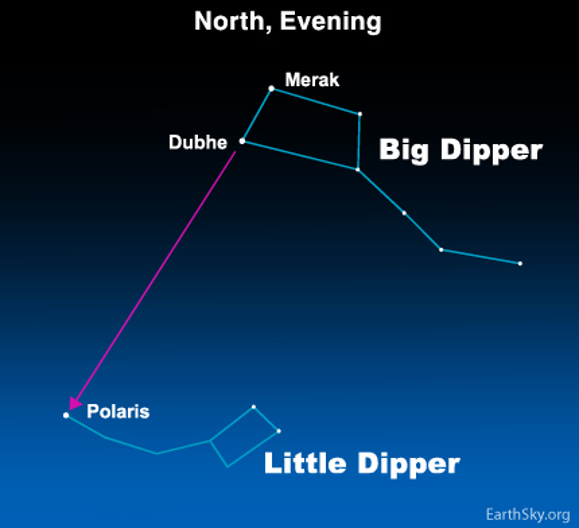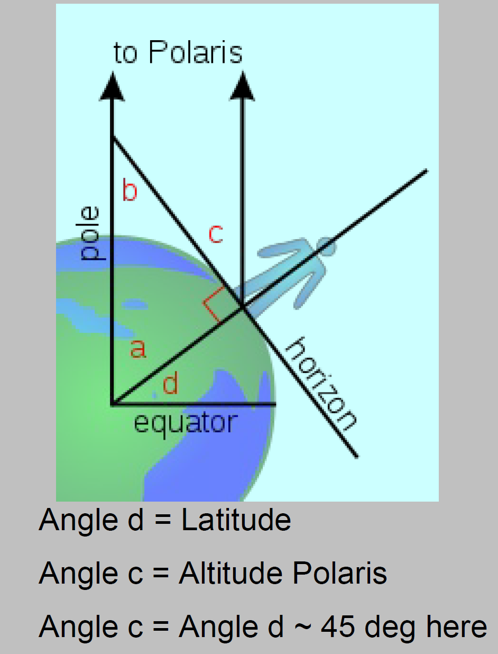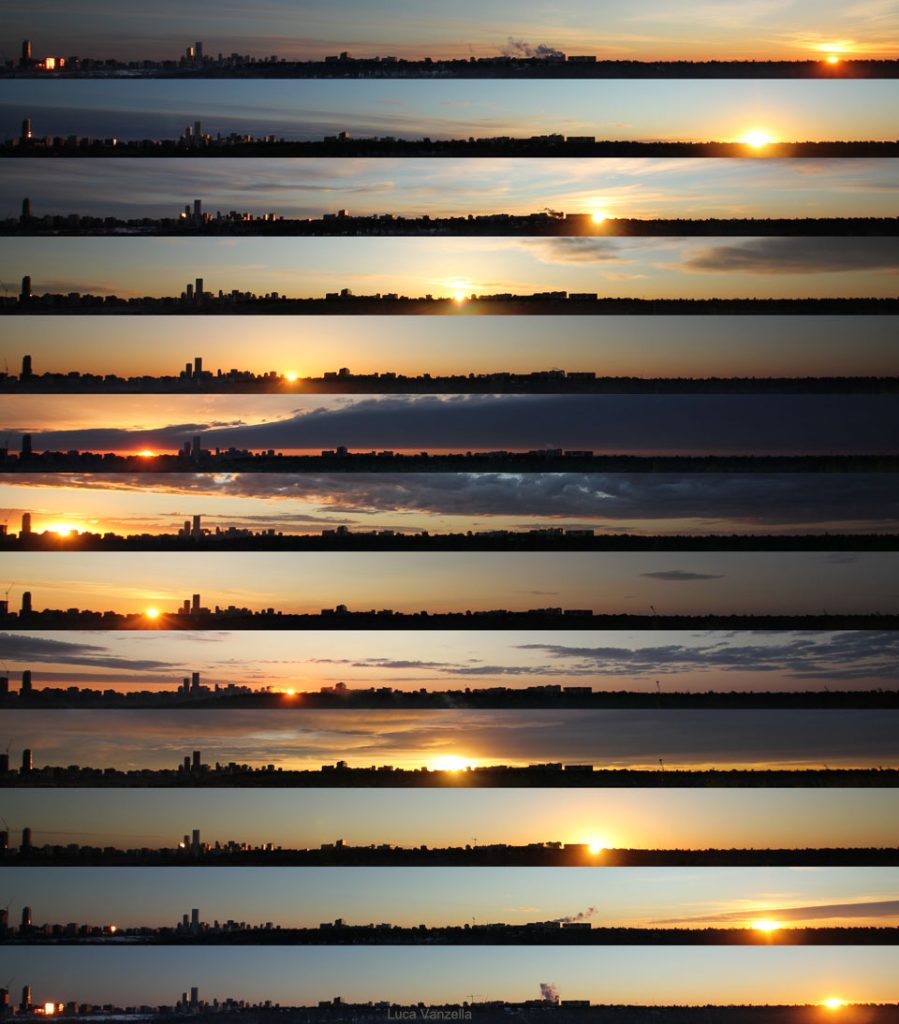38 Activity – Organizing with Astronomy
For thousands of years people have organized their lives by observing the sun, moon, and stars. Today we have clocks, calendars, GPS navigation systems in cars and smart phones, and many other technologies that make it unnecessary for us to pay careful attention to astronomical events. But now that you have read a lot of this book, you are paying more attention to how things are organized. It might be fun and interesting to do some activities that will teach you some aspects of organizing with astronomy.
The North Star
In the Northern Hemisphere we are fortunate that the Earth rotates on its axis while “pointing” at a star that doesn’t move. We can use this “North star” or “Pole star” called Polaris to find our direction and measure our latitude (how far north of the equator we are; if you don’t remember what that means, go back to the chapter on “Organizing Places ). Polaris isn’t the brightest star but it is easy to find using the Big Dipper constellation because the two stars at the front of the dipper point to Polaris, which is the “end of the handle” of the Little Dipper constellation.

Here is a diagram showing how the Big Dipper “pointer stars” help you find Polaris. This diagram shows the stars as they appear at the end of April, when the Big Dipper is at its high point in the sky in the early evening, a good time for kids to look at stars. You can use a website called EarthSky to figure out where the Big Dipper will be at other times of the year.
A very useful fact about Polaris is that its height above the horizon is your latitude. Here’s how that works:
- If you were at the North Pole, Polaris would be directly overhead
- If you were at the Equator, Polaris would be on the horizon
- So if you can see Polaris, your latitude is the angle between Polaris and the horizon

Most of the continental United States is between 25 and 45 degrees of latitude, which means you will find Polaris about halfway between the horizon and directly overhead, or a bit closer to the horizon if you live in a Southern state.
TRACKING THE RISING OR SETTING SUN
When you are looking at Polaris, you are facing “due north” and then you can figure out east (to your right) and west (to your left). You know that the Sun rises in the east and sets in the west, but using Polaris to find directions is much more accurate because the Sun’s rising and setting points move a great deal during the year. The Sun rises directly east and sets directly west only on the first day of Spring and the first day of Fall — what we call the EQUINOXES (can you see “equal night” in that word?). But the rising and setting points move a lot because of the tilt of the Earth on its axis. This causes the length of the day to change on a year-long cycle and this affects many things… which is why we have the idea of SEASONS. In the Northern hemisphere, summer days are long and warm, and winter days are short and cold.
You have probably never noticed how much the rising and setting point of the Sun change throughout the year. So here’s a fun activity to find out.
- Find a place where you have an unobstructed view of sunrise or sunset. (The best place would be where you look out a window or glass door, so you won’t be affected by the temperature).
- Using an ERASEABLE marker (you don’t want your parents to get mad), mark an X over the sunrise or sunset point and write the date (example: 12/01/22).
- Do this for at least two weeks. The longer you keep track of the sunrise or sunrise points, the bigger the change you’ll see in them.
The amount of this change depends on your latitude; the further north of the equator you are, the more change you’ll measure.
Here is an amazing photo by Luca Vanzella (used with his permission) that shows the annual change in the sunrise point where he lives in Northern Canada.


